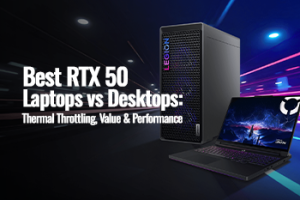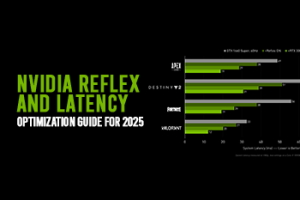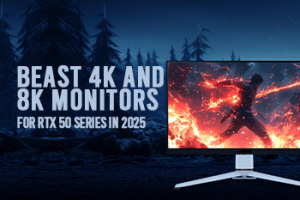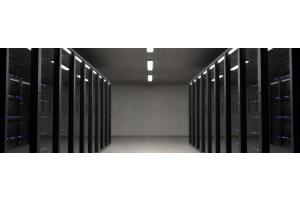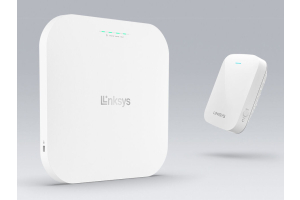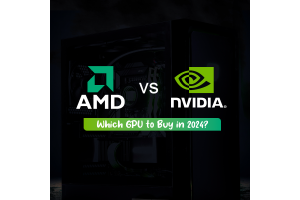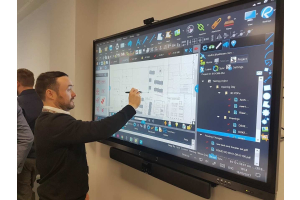RTX 5090 vs Cloud Gaming: Is Local Hardware Still Worth It in 2025
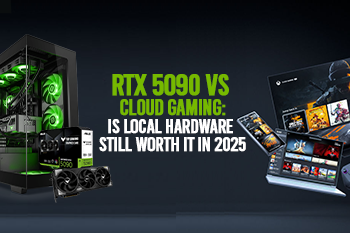

Over the years, gaming has evolved spectacularly. Gone are the days when you need to have an expensive gaming console or PC to enjoy competitive gaming. Nowadays, cloud gaming has taken the gamers by storm; it is no longer a futuristic fantasy; it is accessible, functional, and has become powerful enough to give time to expensive hardware-based gaming. The advent of 5G and 6G, edge computing, and cross-platform have added impetus to the popularity of this sort of gaming.
So much so that the total market value of cloud gaming is projected to reach around $10 billion US dollar by the end of 2025. Given the meteoric rise in the popularity of cloud gaming, users often ask whether it signals the end of traditional gaming supported by PlayStation, Xbox, and Nintendo Switch, or by a gaming PC featuring as powerful as an RTX 5090 GPU.
In this write-up, we will help you know whether cloud gaming or an RTX 5090 gaming PC performs better when it comes to high-end gaming like AAA titles.
However, we first start by understanding what cloud gaming is and how much advancement it has undergone in 2025.
What is Cloud Gaming in 2025?
Similar to what we access content and streaming videos on Netflix or Amazon Prime Video, cloud gaming allows users to access and play games directly on their devices through the internet. The games are processed on powerful remote servers.
Cloud gaming means that you don’t need to purchase a high-end Graphics Card like RTX 5090 or a gaming console, you don’t need to download the games on your system, and you can access them on multiple platforms simultaneously, such as TV, smartphones, or browsers.
Which Platforms Provide Cloud Gaming Services?
Multiple platforms feature gaming through cloud services. For instance, here are the best cloud gaming services in 2025.
-
Xbox Game Pass Ultimate:
Featuring streaming to most smartphones, an immense library with titles from EA, Bethesda, and Microsoft, and multiple advanced capabilities, Xbox Game Pass Ultimate is often ranked as the best cloud gaming subscription. It is compatible with Xbox consoles, PC, Android devices, and smart TVs.
-
NVIDIA GeForce Now:
Supporting high-end PC games without the expensive hardware, 4K streaming, most consistent performance across the services, and capable of supporting existing epic games, NVIDIA GeForce Now is another available cloud gaming subscription service designed for professional gamers. It is PCs, Macs, Chromebooks, and select smart TVs.
-
Amazon Luna:
Amazon Luna has also become a popular cloud gaming service provider. It comes with the most affordable subscription, a curated library, free games if subscribers have a Prime membership, and it can work on web browsers, Windows, Mac, Fire TV, and some smart TVs.
Some Other Prominent Cloud Gaming Service Platforms:
These are prominent cloud gaming service providers; however, there are other options as well, and you can explore them. For instance:
-
Shadow
-
Microsoft
-
Blacknut Cloud Gaming
-
Boosteroid
-
Parsec
-
Playkey
-
Nintendo Switch Online
-
PlayStation Plus Premium
System Requirements for Cloud Gaming:
To enjoy gaming through cloud services, you don’t need extensive hardware devices. You need only two things:
-
Stable and fast internet connection, as speed and latency directly influence gaming performance.
-
Basic Hardware that can include a low-cost laptop, Chromebook, smart TV, or even a smartphone, would be sufficient to play and enjoy cloud-based games.
Pros and Cons of Cloud-Based Gaming:
Here are some pros of subscribing to the services of cloud gaming providers.
-
Users can play games on their devices, even smartphones, and they don’t need to buy high-end hardware equipment. You can play games on multiple devices, freeing you from maintenance costs, heat, and noise management.
-
You can access games instantly, without any need to download and install them, which is a time as well and storage-consuming process.
-
Cloud gaming service providers can update the games regularly, incorporating the latest advancements and robust security features.
-
Cloud-based games are backed by powerful servers, allowing users to enjoy visually stunning gaming experiences and multiplayer features.
However, it is not always rainbows and butterflies; cloud-based games also suffer from some shortcomings.
-
You need to have a stable and fast internet connection. Slow-speed connections can adversely impact the gaming experience as well as gaming performance.
-
Depending on the type of games, the subscription fee can differ, adding overall costs of your gaming undertaking.
-
The speed and data quality of your network have a direct bearing on audio and video quality.
-
Server queues and sessions can sometimes limit your access to gaming.
-
Cloud-based gaming causes complete dependency upon third-party services for maintenance and cloud storage, which can sometimes prove annoying for you.
Having discussed the basics of cloud-based gaming, it would be pertinent here to dwell upon the pros of playing with a powerful GPU like RTX 5090, so that you can make a well-informed decision regarding the suitability of traditional gaming in 2025.
RTX 5090 UK Version: A Brief Overview:
Here are the salient capabilities of GeForce RTX 5090.
-
It is powered by NVIDIA Blackwell architecture that supports fifth-gen tensor cores and fourth-gen ray tracing.
-
RTX 5090 features NVIDIA DLSS 4 with Multi-Frame Generation, allowing users to enjoy AI-enhanced graphics and performance.
-
The GeForce RTX 5090 UK variant supports 21,760 CUDA cores and 680 5th-generation Tensor Cores, enabling it to deliver unparalleled processing and AI acceleration.
-
It comes with 32GB of ultra-fast GDDR7 memory on a 512-bit bus, allowing users to enjoy up to 1.8 TB/s memory bandwidth, making this ultimate gaming graphics suitable for 4K/8K gaming and heavy creative workloads.
-
RTX 5090 is provided with a PCIe 5.0 interface, helping users experience maximum host bandwidth and future-proofing.
In addition, it also features 2 (Native HDMI 2.1b) and 3 (Native DisplayPort 2.1b) interfaces, enabling it to deliver up to 4 displays and a maximum digital resolution of up to 7680 x 4320 (8K).
NVIDIA Studio helps creators access comprehensive creative tools, helping them accelerate their creativity.
NVIDIA G-Sync helps gamers enjoy an immersive experience and ultimate gaming display technologies.
NVIDIA Reflex 2 with Frame Wrap enables users to ensure game-winning responsiveness, helping them outflank their rivals and gain a competitive edge in AAA games.
This is NVIDIA’s flagship GPU, which comes with a TGP (Total Graphics Power) of 575W, which is considerably higher than that of the RTX 4090.
Overall, RTX 5090 is a monster among all available GPUs in the UK and beyond. In terms of performance, visual fidelity, realism, latency, responsiveness, thermal and acoustic efficiency, and AI-enhanced gaming, the RTX 5090 gaming rig, whether a customized or prebuilt Gaming PC, can provide an unmatched and unparalleled gaming experience.
Given these incredible and cutting-edge capabilities of the RTX 5090 gaming rig, it is therefore extremely important that we compare the performance of RTX 5090 gaming with cloud-based gaming so that you can decide which one best serves your gaming appetite.
RTX 5090 vs Cloud Gaming: A Head-to-Head Comparison:
Here is a head-to-head comparison between cloud-based gaming and an RTX 5090 build.
-
Latency & Input Lag:
There is no denying that, despite all the advancements in cloud gaming, input lag and latency are the most important hurdles. Latency is the time taken between input and visual response on the screen, whereas input lag is the delay between action of the gamers and the game’s visible reaction.
When it comes to latency and input lag, RTX 5090 is just a monster. In particular, when this GPU is coupled with NVIDIA Reflex 2, it can achieve extremely high refresh rates with latency as low as 3ms in titles such as Valorant.
However, for graphically-intensive AAA title Games that need enabling of DLSS 4 Multi-Frame Generation (MFG), input latency can increase. As a remedy, NVIDIA is set to introduce Reflex 2's new "frame warp" feature, which can reduce input latency by 75% as compared to previous generations.
The latency in cloud-based gaming is comparatively higher due to rendering delay, network transmission time, video streaming, and other factors. As a result, latency in cloud gaming can range from 20 ms to 80ms.
Verdict:
An RTX 5090 gaming rig can help you achieve dramatically lower input lag and latency as compared to cloud gaming. Though cloud gaming service providers are trying to catch up, they are lagging massively in this area.
-
Visual Fidelity & Resolution:
RTX 5090 is a pinnacle of graphics performance; it can effortlessly support ultra-high visual fidelity and resolution gaming, supporting native 4K and 8K gaming with high frame rates. The fourth-gen Ray Tracing, with the help of DLSS 4 and Multi Frame Generation, can allow you to experience cinematic lighting and reflections.
For instance, for graphically demanding titles such as Hell is Us, it can support smooth 4K gameplay at 80–100 fps, which is indeed an impressive visual fidelity and resolution.
Cloud gaming, on the other hand, is restrained when it comes to resolution. Though some cloud gaming services, such as Xbox Cloud Gaming and Boosteroid, support up to 4K streaming, most of them can support 1080p or 1440p at max. Similarly, these service providers don’t provide Ray-Tracing except for GeForce NOW Ultimate, but again, the Ray-Tracing that cloud gaming offers is not a match for RTX 5090.
Furthermore, in order to reduce bandwidth requirements and latency, cloud streams are massively compressed, which may give rise to issues like blurring, banding, or artifacting in fast-paced titles.
Verdict:
Here again, local gaming on the RTX 5090 PC build is clearly the winner.
-
Game Library & Mod Support:
This is another criterion that is used to compare the performance of the two: local gaming vs cloud gaming.
The RTX 5090 gaming rig comes with advanced AI and ray tracing capabilities. There are now over 700 games and applications that support RT (Ray Tracing), allowing gamers to enjoy full ray tracing and neural rendering for realistic graphics and high performance.
RTX 5090 gaming rigs support full Mod support, whether Nexus Mods, Steam Workshop, or custom scripts, they can allow you to customize, tweak, and install every mod.
Cloud gaming platforms feature thousands of titles across platforms like Steam, Epic Games Store, and Ubisoft Connect, allowing users to stream games with a minimum subscription fee.
These cloud-based gaming platforms don’t support any Mod support because games run on remote servers, providing you no freedom at all to install third-party content or modify game files.
Verdict:
The RTX 5090 can provide unmatched local gaming with full mod support and advanced ray tracing for gaming enthusiasts. It is a clear winner here in this category.
-
Ownership & Offline Access:
As was earlier discussed that local gaming on an RTX 5090 gaming PC allows users full control over their gaming setup, including installing, running, and modifying games and software as they wish.
In addition, you can play games offline without any need for internet, provided that titles support offline mode. You can also enjoy full modding and customization of games, which is often not available or restricted in cloud gaming.
Unlike RTX 5090 gaming PC, cloud-based gaming service platforms such as Xbox Cloud Gaming or GeForce NOW allow access to games through a subscription or pay-per-use model. You own the game license but not the games.
Furthermore, cloud games are supported by remote servers at data centers, and you need to have a stable internet connection. There is no option for offline games, even for single-player games.
Verdict:
RTX 5090-based gaming rigs or PCs offer full ownership of titles, and you can enjoy offline gaming as well. RTX 5090 is again a clear winner here.
-
Cost Analysis:
Needless to say, cost is another important benchmark that we should use to compare the RTX 5090 build and cloud-based gaming.
Building a compatible RTX 5090 PC or gaming rig is an expensive undertaking. First, RTX 5090 is a flagship GPU of NVIDIA, so its price is. Second, you need to find a fully compatible motherboard, processor, 4K or 8K monitor, power supply unit, and a liquid-based cooling solution to unlock the fullest potential of this powerful GPU.
Besides this upfront cost, GeForce RTX 5090 is power power-hungry graphics card, you need to spend a high electricity cost. Therefore, the RTX 5090 build proves quite costly both in terms of upfront as well as maintenance and operational costs.
Cloud-based gaming, on the other hand, does not demand cutting-edge hardware requirements. A simple laptop, Chromebook, or even smartphone can be used to play games. However, you need to spend an hourly/monthly/annual subscription fee to access and play games. This subscription-linked cost may accumulate over time, depending on your pattern of playing games and the cost associated with having a high-speed network connection.
Conclusion:
Both local games on an RTX 5090 gaming rig and cloud-based gaming through various platforms feature pros and cons. RTX 5090-based gaming PC offers unmatched performance in every possible area, whether latency, input lag, resolution, ownership, Mod support, or freedom to play offline games. Cloud-based games, however, prove quite inexpensive.
As a recommendation, if you are hardcore gamers looking for ultra-high resolution and true-to-life graphics with full customization and mod support, you should go for an RTX 5090-based gaming rig; otherwise, for casual gaming, cloud-based gaming would be enough for you.
Thanks for reading.










